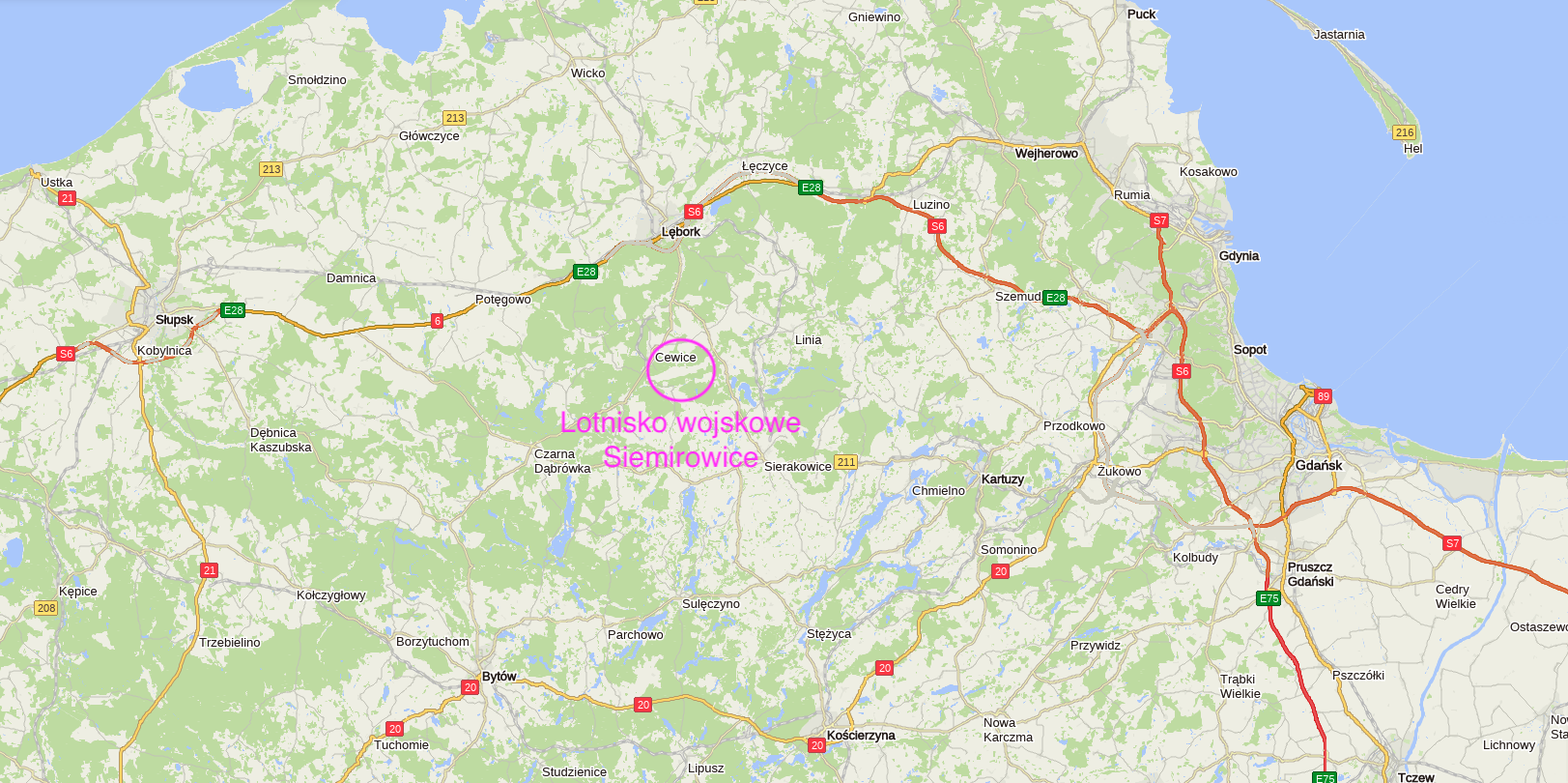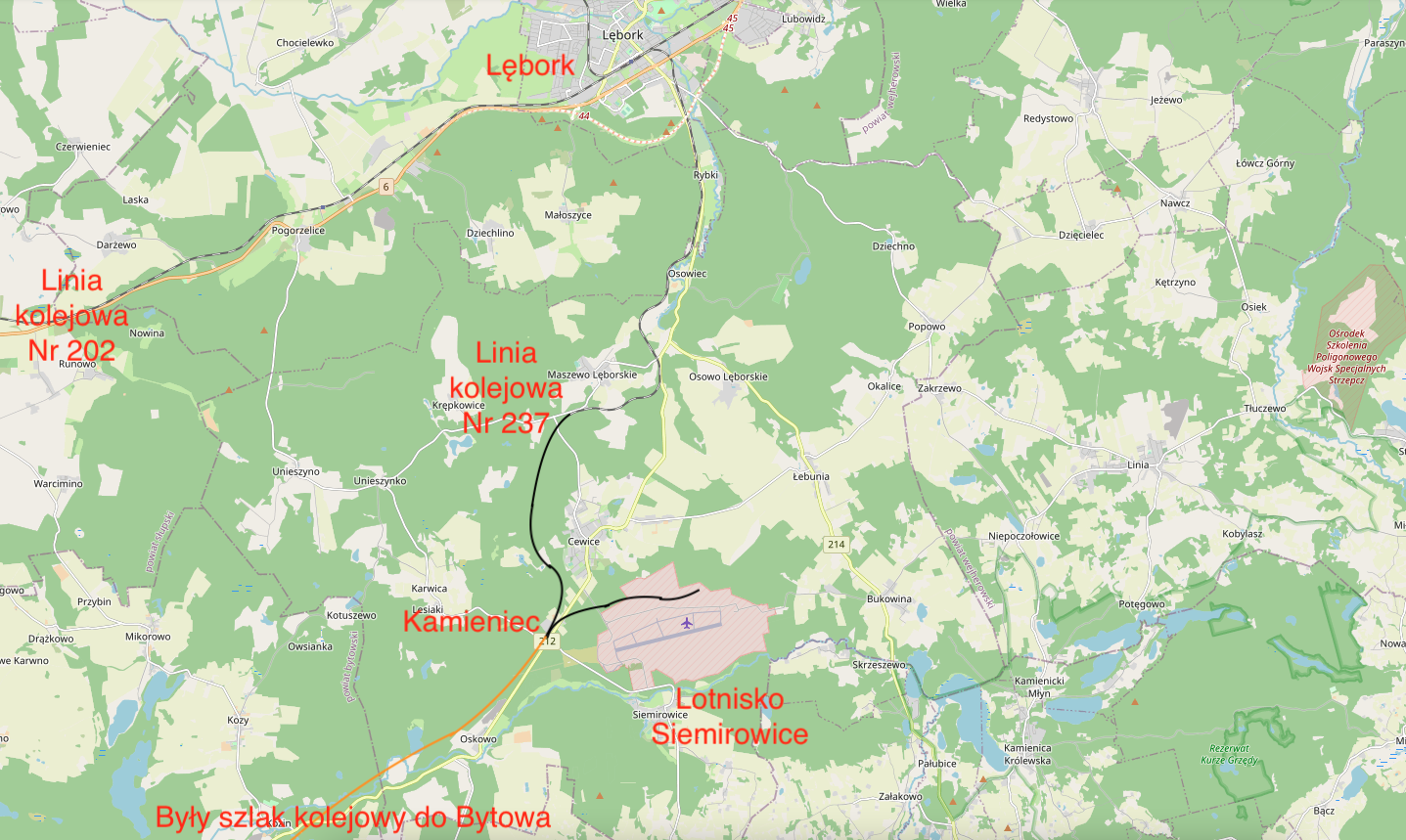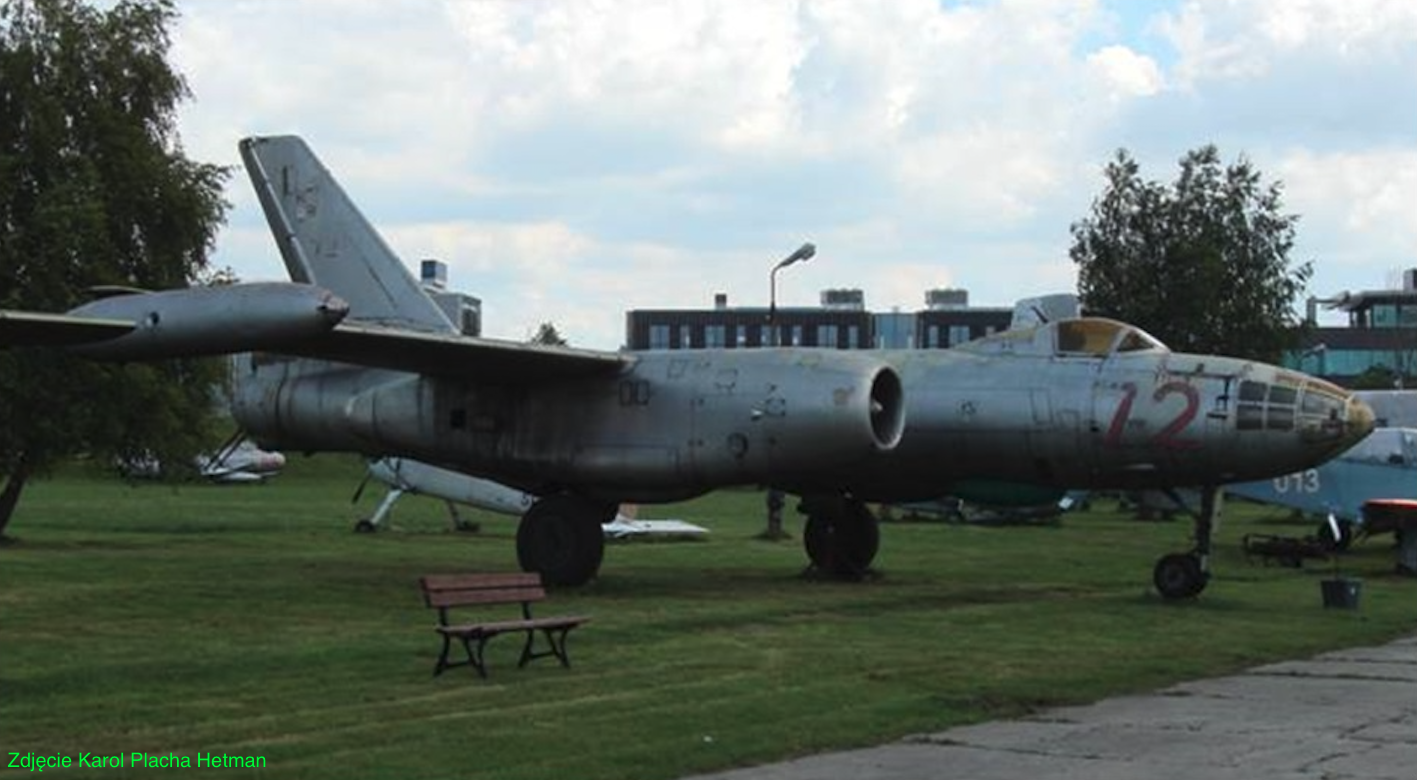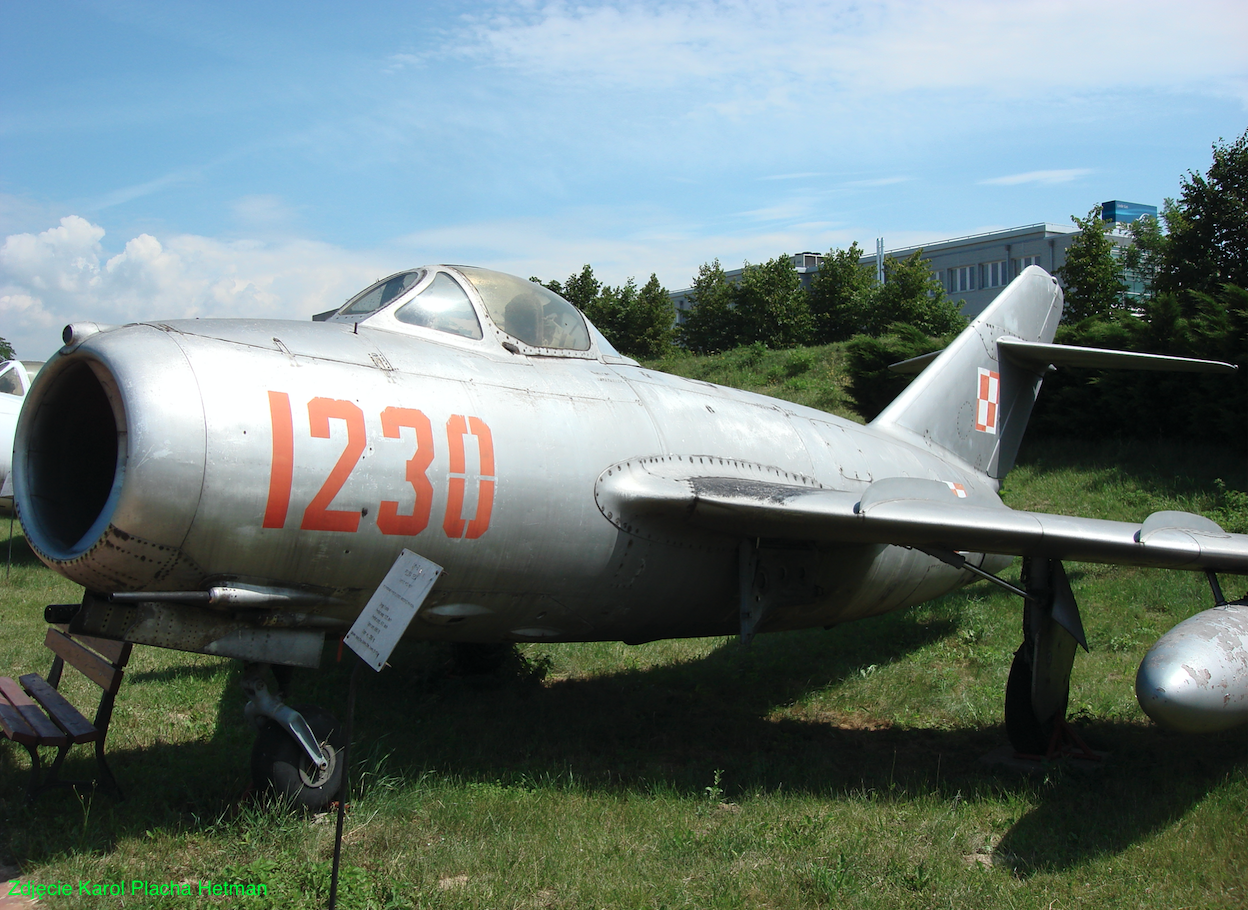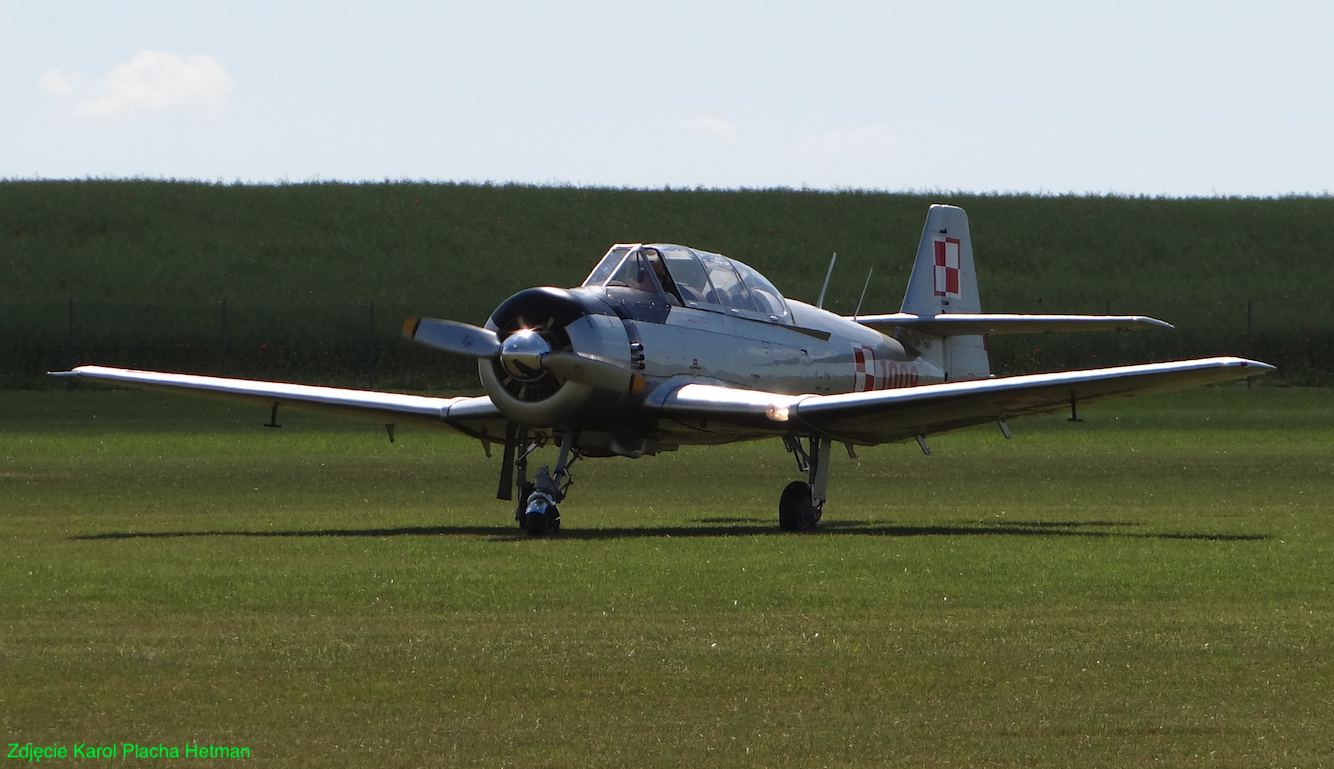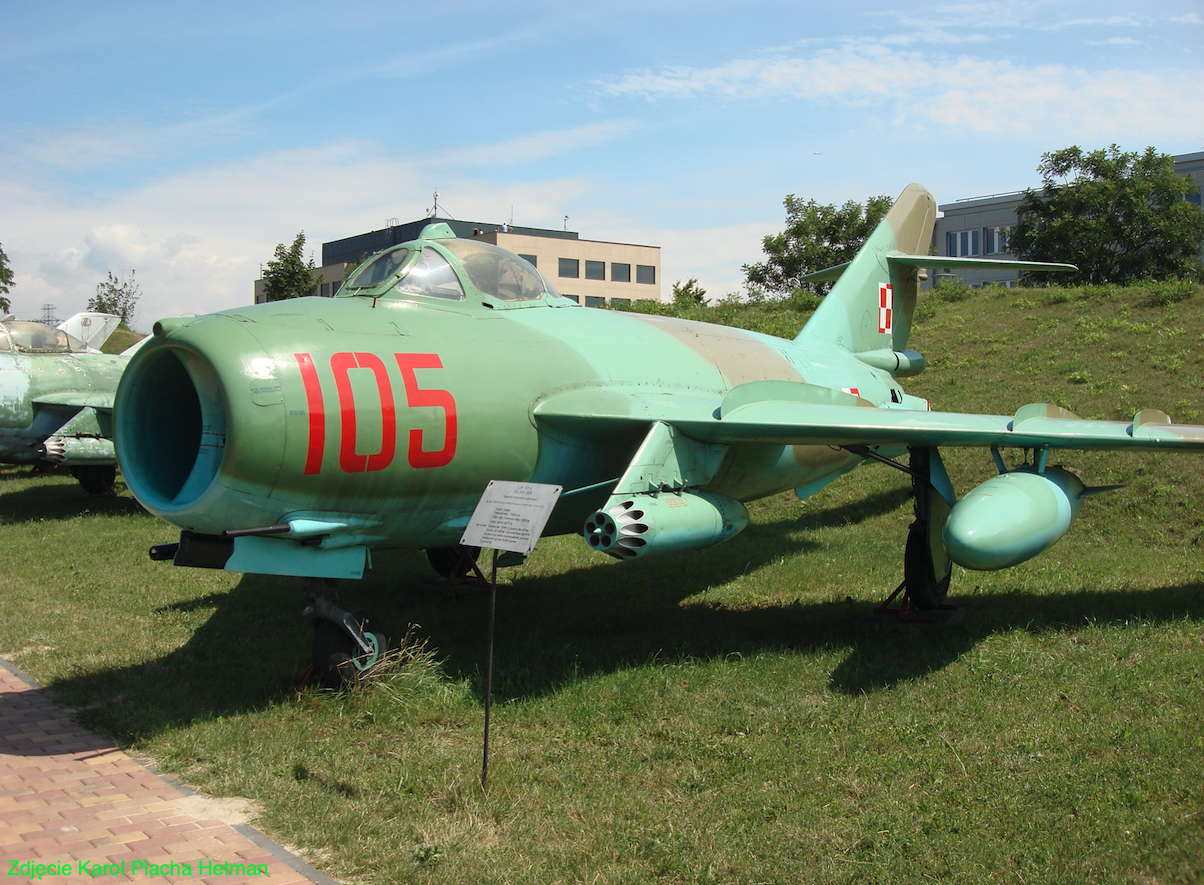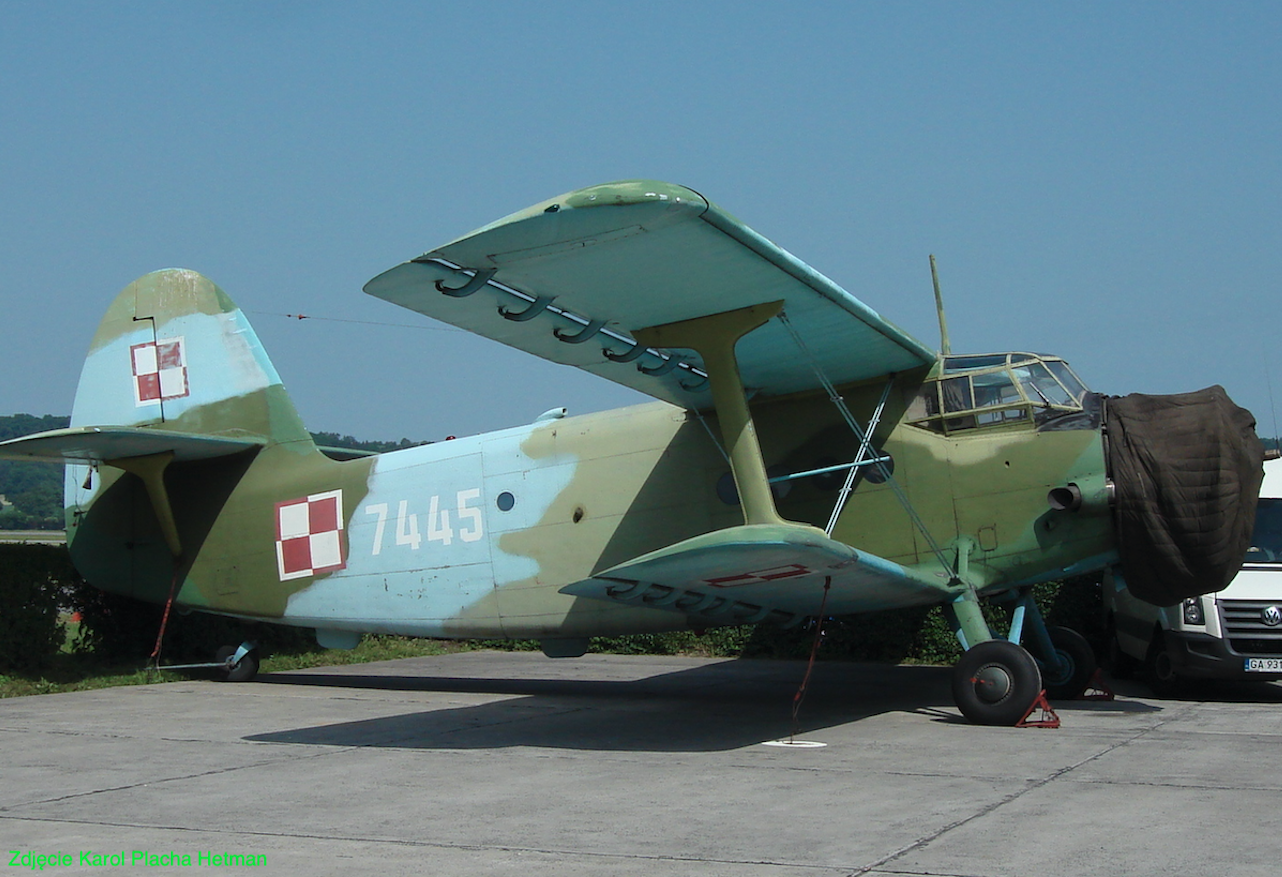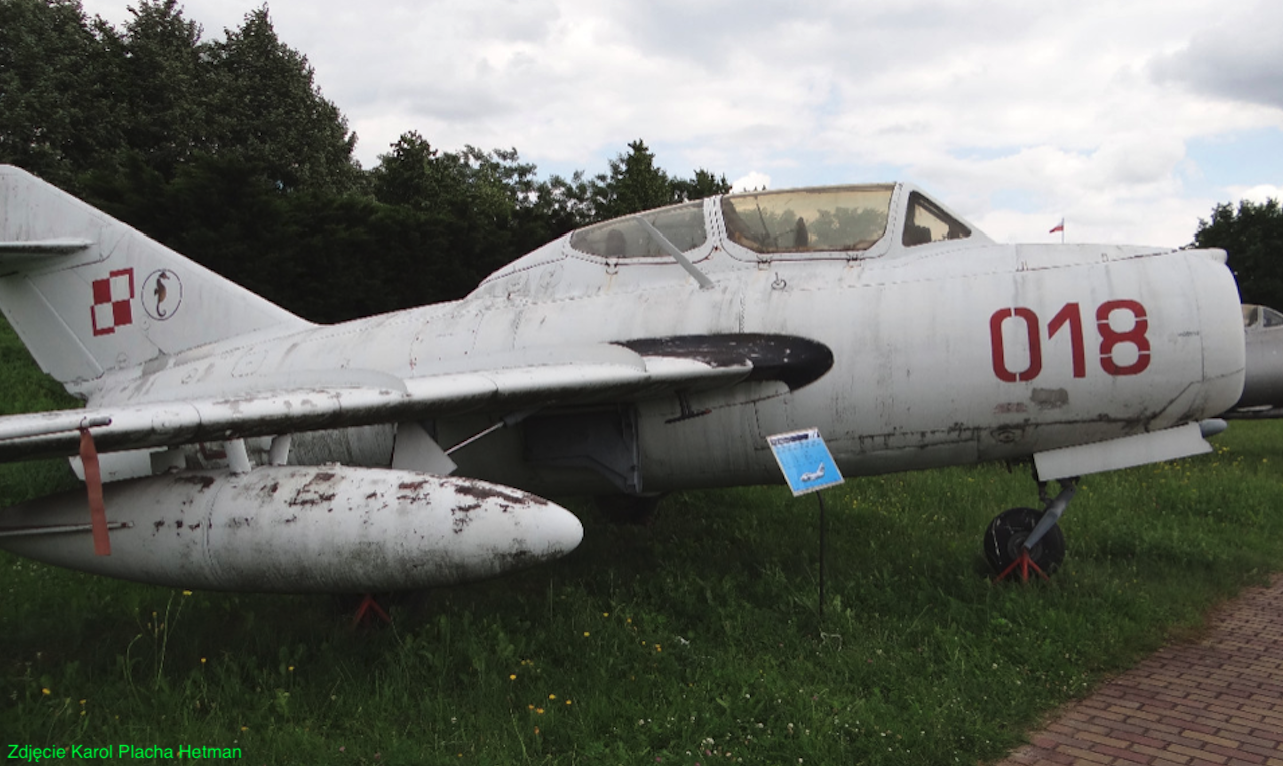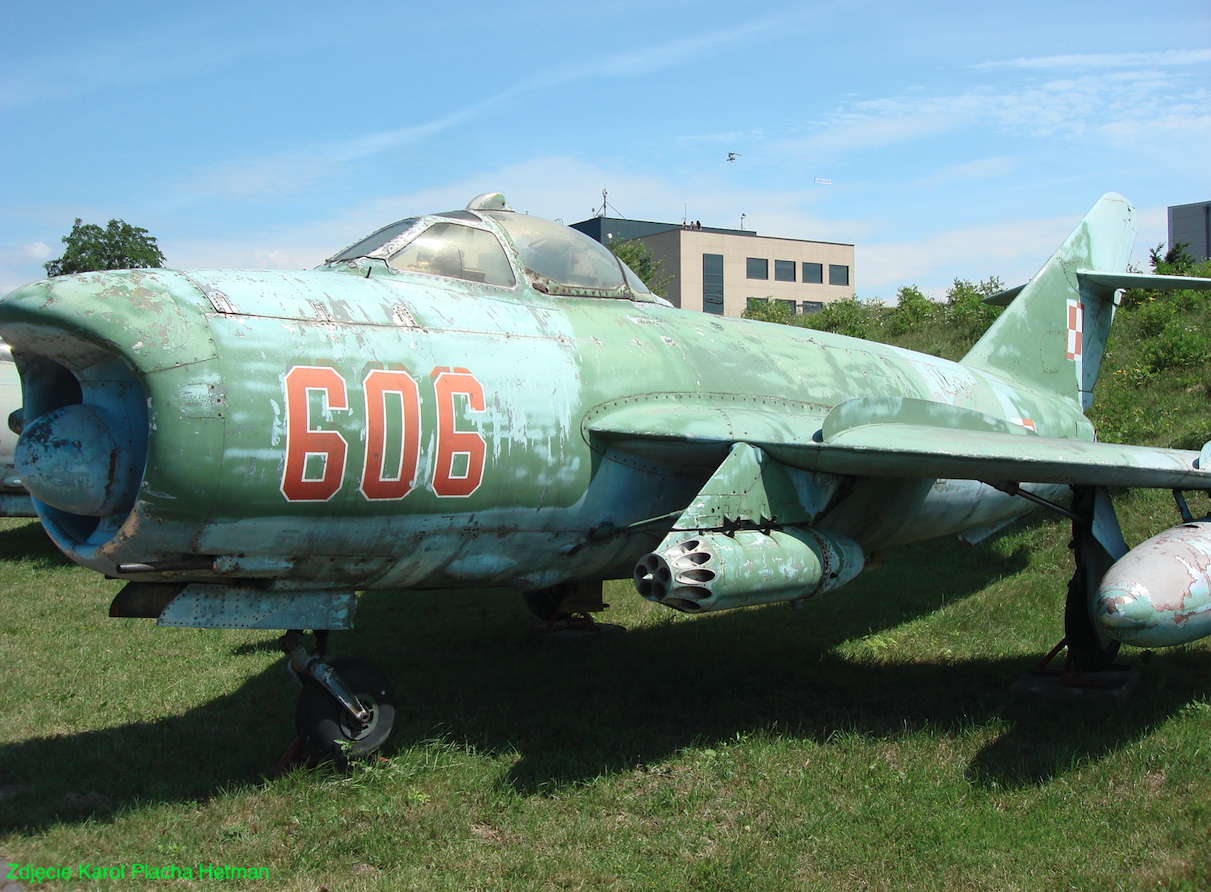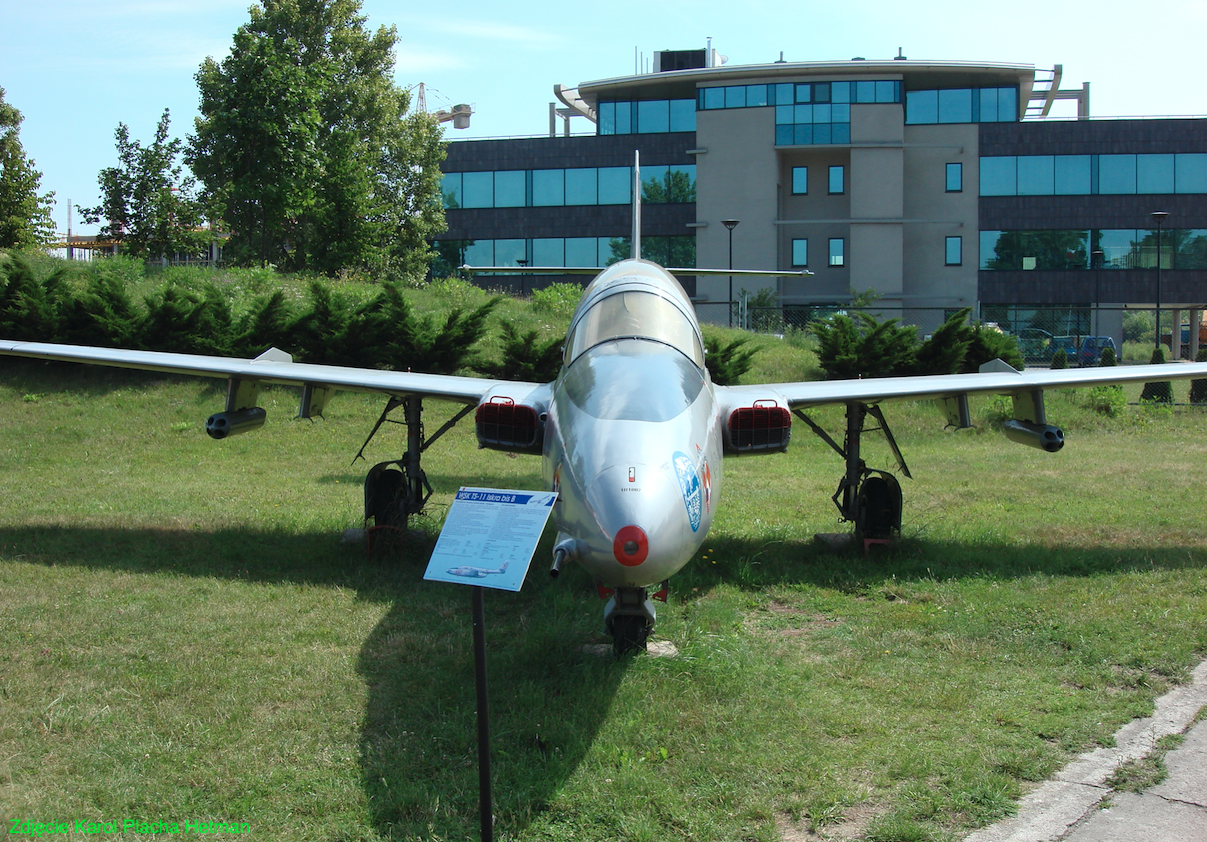Siemirowice 2010-06-30
Siemirowice Airport.
Geographic coordinates: 54.416N 17.765E. Elevation 505 ft.
The Siemirowice airport is located in the Lębork Land. The Lębork Land returned to Poland in 1945 and was incorporated into the Gdańsk Voivodeship. In 1975, Lębork was incorporated into the newly created Słupsk Voivodeship, and in 1999, the Lębork Land was again under the care of Gdańsk within the Pomeranian Voivodeship. It is 20 km from the airport in Siemirowice to Lębork, 72 km to Gdańsk, 177 km to Bydgoszcz and 412 km to Warsaw.
History of Siemirowice Airport.
Siemirowice Airport is located in the Pomeranian Voivodeship, Lębork County, Cewice Commune. Other names used; Cewice Airport, Lebunia Airport.
Siemirowice Airport is a typical Polish Military Airport. The airport was built in the period 1950-1956, when almost 40 military airports were built in Poland. The Siemirowice airport was and still is one of the airports subordinated to the Polish Navy. The decision to build it was made at the beginning of the 1950s. It was created as if in exchange for the liquidated Gdańsk Wrzeszcz Airport, which prevented the development of the Tri-City. At that time, the 30th Naval Air Regiment was stationed at the Gdańsk Wrzeszcz Airport, which was on the eve of major changes.
Initially, the Siemirowice Airport was to be occupied by the Soviet army stationed in Poland, but as a result of Polish-Soviet talks, the Soviets seized airports in the western part of Poland.
A wooded, sparsely inhabited area was chosen for the location of the airport. The name of Łebunia near Lębork appeared in the first documents. Later, the name of Cewice began to be used, because local authorities had their seat here. Residential blocks of the officers’ (garrison) housing estate began to be built in Siemirowice. For this reason, both names are used interchangeably for the Airport to this day; Cewice, Siemirowice.
The design of the airport took into account all the latest trends in the construction of such facilities in the world. The airport was designed for the base of an aviation unit in the strength of an aviation regiment, along with an airport maintenance battalion and a blind landing squadron. The construction of the airport began at the beginning of 1953. One of the first investments was a railway siding, to which virtually all building materials were delivered. The pace of work was high, and the construction unit already had a lot of experience in erecting similar facilities. In 1955, the runway (RWY) was ready, with dimensions of 2,000 m x 60 m, taxiways and 20 individual parking stands for aircraft. By the time the first host arrived, they were ready; MPS, technical warehouse, battery room, compressor room.
Train to Siemirowice Airport.
The railway to Lębork was launched in 1870. The railway connected Lębork with Gdańsk and Stargard Szczeciński (railway line No. 202). The railway to Bytów was opened in 1884. Both Lębork and Bytów became junction stations. In 1902, Lębork and Bytów were connected by the railway line No. 237. The line No. 237 was 55 km long. It ran through the following towns: Lębork, Lębork Dretowo, Osowo Lęborskie, Maszewo Lęborskie, Cewice, Kamieniec, Oskowo, Kostroga, Czarna Dąbrówka, Jerzkowice, Jasień, Soszyca, Pomysk, and Bytów. Line No. 237 was of local importance and was built as a single-track line with a maximum speed of 60 km/h and was never electrified. The trail was relatively winding, because you had to overcome even 150-meter differences in height. Therefore, the trail had numerous viaducts and bridges, with brick or concrete construction. The trail ran through forests, numerous hills and ravines, which made the route very picturesque. It was only from Jerzkowice towards Bytów that the terrain was easier to overcome. The curves of the tracks were more gentle. It is worth mentioning that in Maszewo Lęborskie there was a railway siding that led to the local factory.
In March 1945, the Lębork Land was occupied by CCCP troops and a period of looting, rape and destruction began. The railway line No. 237 Lębork – Bytów was dismantled by the Muscovites. Railway rails and other equipment were exported to the CCCP. Some viaducts and bridges were blown up. The railway line Bytów – Miastko met the same fate. It is worth mentioning that dirt roads were created spontaneously after the former tracks. In 1947, a fragment of the railway route No. 237 was rebuilt, on the Lębork – Kamieniec section, 17 km long. The reconstruction was related to the planned construction of an airport for the needs of the Soviet troops stationed in Poland. From the Kamieniec station, a railway siding was led directly to the airport under construction. The length of the railway siding was approximately 1,500 m. In order to enter the siding, the train, after arriving from Lębork to the Kamieniec station, has to change the direction of travel and head east along the curve of the tracks to the right. At the Kamieniec station, on the southern side, two tracks have been preserved. One ended with a concrete retaining trestle. The second was a trail track and ends before the circular road. Around 1950, passenger traffic was launched on the rebuilt route, because the developing Lębork needed employees. Passenger traffic was stopped in 1979, and passengers were taken over by bus transport. Freight trains ran until 2004. In 2014, route No. 237 on the section Lębork – Maszewo Lęborskie (11 km) was modernized. The cost of the investment amounted to PLN 9.5 million.
Currently (2021) on the existing route No. 237 there is only freight traffic of national importance, because it provides transport to the military airport and the armored base in the Lębork Dretowo estate. On the liquidated route, the viaducts and bridges, blown up in 1945, have been preserved as permanent ruins and are worth visiting. At railway stations, station and warehouse buildings, built of red brick or half-timbered walls, have also been preserved. All are covered with red tiles. On the walls you can find Germanic inscriptions of station names. Most of these buildings are inhabited. After the demolished track, you can find rotten railway sleepers, kilometer posts and a few bridges. From the side of Bytów, the track was almost straight and ran in an artificial gorge and further on the embankment.
Roads to Siemirowice Airport.
Near the airport, from the east, there is the Provincial Road No. 214, which connects Łeba with Warlubie. The road is 170 km long and runs through the Cewice Commune, where there is an airport. It is worth mentioning that this road from Warlubie to Głuche near Skórcz, 28 km long, was built in the interwar period. This road was the first part of the Polish highway from Warsaw to Gdynia. This highway was designed by the Italian engineer Piero Purricelli, who designed Italian highways. The motorway was to bypass German territories and the Free City of Gdańsk, as is the railway line No. 201. The motorway was run in long straight sections, avoiding villages. The first section from Warlubie to Głuche (28 km) was built in 1936-1939. Further construction was interrupted by the Germans attacking Poland.
Returning to the access to the airport, it leads to the airport by Provincial Road No. 212, which is 116 km long. Looking from Lębork towards the south, from the Provincial Road No. 214, in the village of Osowo Lęborskie, road No. 212 starts in the south-western direction. Provincial Road No. 212 connects: Lębork-Bytów-Chojnice-Człuchów-Bydgoszcz. This way we can get to another former military Konarzyny Airport.
Siemirowice Airport. 50 years.
The first military unit that settled at the Siemirowice Airport for many years was the 15th Independent Aviation Reconnaissance Squadron of the Polish Navy, established in 1955. The 15th SELR airlift was transferred to the Siemirowice Airport on October 1, 1956. In 1956, the Airport was based; 2 Il-28, 3 Il-28 R, 1 UIl-28 and a liaison Po-2. New services and facilities for them were systematically created; weather department, film processing, communication.
At the same time, when the 15th SELR MW was established, changes were being made in the remaining part of the 30th PL MW. The regiment was still training on Yak-9 and Yak-11 aircraft, but decisions have already been made to rearm it with turbojet aircraft. On July 27, 1957, Ordinance No. 0137/Org. Chief of the General Staff of the Polish Army, on the reformation of the 30th PL MW into the 30th Naval Air Assault Regiment. Following this order, on August 16, 1957, an Order of the Commander of the Polish Navy was published in this matter. The Siemirowice Airport was also designated as the stationing site. On August 10, 1957, the Regiment was moved to Siemirowice by cars. The Jak-9 aircraft were withdrawn from the state and transferred to Dęblin, and the Lim-2 aircraft became the basic aircraft of the Regiment. The first copies landed in Siemirowice in August 1957. At that time, most pilots were trained for a new type of aircraft in Dęblin, and the technical staff was trained in Zamość. The regiment still had Jak-11 aircraft at its disposal.
To complete the history of the first years of the Siemirowice Airport, a few more historical facts should be given – On November 12, 1949, the Minister of National Defense ordered, by March 25, 1950, to form the 50th Naval Airport Service Battalion in Słupsk. In 1951, on the basis of the Order of the Minister of National Defence, the Commander of the Navy ordered the transfer of the 50th Airfield Service Battalion of the Navy from Słupsk to Gdynia Babie Doły. But already on July 15, 1952, the unit was transferred to the airport in Gdańsk Wrzeszcz and subordinated directly to the MW Aviation Command. Since it was decided to liquidate the Gdańsk Wrzeszcz Airport on May 13, 1957, the Commander of the Navy ordered the 50th Airport Service Battalion to be redeployed to the Siemirowice Garrison by August 10, 1957.
60 years.
After three years, in December 1960, under the order of the Chief of the General Staff of the Polish Armed Forces, the 30th Assault Aviation Regiment of the Polish Navy and the 50th Airfield Maintenance Battalion of the Polish Navy were reformed into the 30th Fighter and Assault Aviation Regiment.
This was based on the general trend in Polish Aviation, and the main reason was the lack of a specialized attack aircraft. Let’s say that the Russians in the 50s of the twentieth century did not introduce any attack aircraft into their armament, and focused only on interceptors and long-range bombers. In the Polish Aviation Industry, the constructors, analyzing the Western requirements for the operational capability of attack aircraft, came to the conclusion that the Lim-5 aircraft, after appropriate modifications, is able to act as an attack aircraft. Such work has been undertaken. As a result, an aircraft designated Lim-5 M was created. A batch of these aircraft was produced and in 1960, sent to several military units for trial operation.
Several Lim-5 M aircraft also went to Siemirowice. We do not know what the exact operation of these machines looked like in the 30th PLM-Sz in Siemirowice. It is known that the first weeks of operation of the Lim-5 M aircraft in the Polish Military Aviation did not turn out positively. There have been several breakdowns and disasters. The aircraft began to be operated with significant limitations, and after a few months the aircraft were returned to the manufacturer for modernization. More on this in other articles.
In February 1963, the equipment of the 30th PLM-Sz received the first Polish production aircraft, the training and training TS-8 Bies. These aircraft significantly improved the process of training young pilots in the unit, and allowed experienced pilots to consolidate the acquired habits.
On January 30, 1964, Lim-6 bis aircraft landed at Siemirowice Airport. The last aircraft was delivered in early March 1964. In total, 23 copies were accepted. All Lim-6 bis aircraft entered the status of the 30th PLM-Sz MW, replacing most of the Lim-2 aircraft. The Lim-6 bis aircraft was a continuation of the modernization process of the Lim-5 M aircraft. The new aircraft received less innovative solutions than the Lim-5 M, but much better armament in the form of unguided missiles. More on this in other articles. Lim-6 bis aircraft became the basic attack aircraft in the Polish Military Aviation for many years. Successful and liked by pilots and technicians. Of course also in Siemirowice.
The first An-2 aircraft appeared in Siemirowice in January 1965. Previously, it was used by the 18th Liaison Aviation Squadron in Gdynia Babich-Doły. On December 22, 1965, the 50th Supply Battalion was separated from the 30th Fighter-Assault Aviation Regiment.
Another reorganization in May 1967 changed the numbering of the regiment from the 30th to the 7th PLM-Sz. In 1966, there was a need to reorganize the 15th Independent Reconnaissance Aviation Squadron. The existing equipment was gradually crumbling, and the replacement of the reconnaissance Il-28 R with modern aircraft was not in sight. In this situation, an ad hoc solution was adopted. At the beginning of 1967, tactical reconnaissance aircraft from the SB Lim-2 family were introduced. As a consequence, the unit was renamed the 15th MW Reconnaissance Aviation Squadron. The squadron grew quantitatively, but there was no qualitative progress. Three flights were brought to life on SB Lim-2 Art (SB Lim-2 A) planes. The first "Arts" arrived in Siemirowice in October 1967.
70 years.
Over time, the Lim-5 P type interceptors used by Polish Fighter Aviation (those with radar sights) ceased to fulfill their role. Since they still had a long service life of airframes, it was decided to rebuild them into fighter-assault versions. SR has been removed from aircraft. For balance, the battery was moved forward and ballast was added. An AFA-39 camera was mounted. Added additional hardpoints. No braking parachute was fitted. The work was carried out at LZR-2 in Bydgoszcz. The aircraft was eventually named Lim-6 M or Lim-6 MR. The first aircraft so rebuilt in 1971 was 1D 06-02. In the years 1972-1978, about 60 Lim-5 P machines were rebuilt to the Lim-6 MR standard. These planes were the first in the Polish Military Aviation to receive painting called camouflage. At the beginning of the 70s, these machines also went to the 7th PLM-Sz. They supplemented the state of Lim-6 bis aircraft.
In April 1977, training on TS-8 Bies aircraft was completed, and in May 1977, the first PZL TS-11 Iskra aircraft arrived in Siemirowice.
On October 1, 1979, Il-28 aircraft ended their service. The Naval Aviation was the last one in Poland to end the operation of this type of aircraft. On June 15, 1982, the operation of the last Lim-6 bis / MR aircraft in the Naval Aviation was officially terminated and decommissioned.
80 years.
In November 1982, in line with the trend, the 7th PLM-Sz was renamed the 7th Fighter-Bomber Regiment and was waiting for new Su-22 aircraft. However, these planes never hit the state of the unit in Siemirowice. The lack of new combat aircraft forced further changes in the units based in Siemirowice. On July 1, 1988, the 15th Independent Reconnaissance Eskadra MW was disbanded. In the mid-1980s, it was equipped with 10 SB Lim-2 A and 2 SB Lim-2 aircraft. These planes have already reached the end of their service life. They were taken over by the 7th Regiment.
The 7th PLM-B Regiment was renamed the 7th Special Aviation Regiment, with two squadrons of aircraft in Siemirowice and two squadrons of helicopters in Darłowo.
The basic aircraft in the Regiment was the training and training TS-11 Iskra. They were complemented by good transport An-2. At that time, the Polish Aviation Industry was already mass-producing An-28 aircraft for CCCP. A small transport aircraft with a fashionable feature at that time; short take-off and landing. Polish Military Aviation has been interested in a new plane from Mielec since the late 1980s. Since 1987, PZL Mielec has been working on adapting the An-28 to the requirements of the Polish Army. Many modifications have been made. All this led to qualifying tests with a positive result.
The first military recipient of the PZL An-28/M-28 aircraft was the Navy, which received the transport and passenger versions of the An-28 TD. The planes were purchased in 1988, and they were two machines No. 1AJ 004-04 nb 0404 and No. 1AJ 004-05 nb 0405. These planes were based both at the Siemirowice Airport and at the Babie Doły Airport.
In accordance with the order of the Chief of the General Staff of the Polish Armed Forces of December 1990, on March 31, 1991, the 50th Supply Battalion was disbanded. From that moment it became a sub-unit of the formed 7th Special Aviation Regiment of the Navy.
In the absence of prospects for the purchase of new combat and reconnaissance aircraft for the Navy, it was decided to adopt the Polish TS-11 Iskra aircraft, designated TS-11 Iskra R, for these tasks. The aircraft was based on the TS-11 bis DF. This makeshift solution lasted 11 years. No new aircraft were built, only existing ones were improved. The aircraft received an American-made RDS-81 weather radar. It is operated by an aviator in the second cabin. The machine also received a GPS satellite navigation system. This version is inextricably linked with Naval Aviation. It was for the needs of naval aviators that 6 TS-11 Iskra R were built, numbered 19-09, 19-10, 19-13, 19-17, 19-18, 19-19. These planes went to the 3rd Air Squadron in Siemirowice, where they served for eleven years. This squadron also had typical TS-11 bis DF numbers 14-10, 14-11, 14-13, 17-16, 17-22, 18-02, 18-03, 18-05, 20-11, 20-12, 20-13, or 11 machines. All aircraft used in Siemirowice had camouflage, and from 1999, after Poland’s accession to NATO, a white NAVY inscription was added.
Positive opinions about the M-28 (An-28) aircraft caused the Navy to place an order for the development of a patrol version of this aircraft. In 1989, the MW Aviation Command defined the requirements for a patrol and rescue aircraft to replace the aging PZL An-2 M. The advantage of the Polish design over similar Western ones (but definitely larger and heavier) was decisive. PZL Mielec developed the patrol version of the aircraft PZL An-28 B1R Bryza-1R No. 1 AJGP 01-01. The machine came from the existing An-28 aircraft of the eighth production series. The prototype of the new aircraft was flown in 1992. The SRN-441XA radar station was installed under the fuselage of the aircraft in the nacelle.
Already in 1993, the aircraft received a significantly modified ARS-100 radar. It was equipped with a new antenna, although with an older display indicator from the SRN-400 series marine radars. The first aircraft, named M-28 RM from SR ARS-100, was handed over for trials at MW in October 1994. This is not the end of the modifications. In 1997, a completely new radar system, designated ARS-400, was developed. The SR ARS-400 is used to detect objects on the sea surface, detect the coastline, protect against smuggling, protect fisheries, weather phenomena, detect pollution, rescue tasks, and track response devices. The radar can track selected targets automatically or manually. The data is automatically transferred to the Łeba-2 command system. The radar has a flat antenna with a beam stabilization system. SR works in the 9.2-9.5 GHz band. The work system is multi-channel – it tracks surface targets, maps the area, monitors atmospheric phenomena and pollution. Tracks up to 100 targets simultaneously over 100km away. Other equipment includes; navigational radar station coupled with a precision navigation system, automatic pilot, camera, Cheliton rescue radio direction finder, ŁS-10 system, exit and entry connection with the Łeba-2 command system, two nodes for suspending 100 kg of illuminating bombs, life rafts. After completing the tests with the SR ARS-400, the army received 7 aircraft with this system. 7 machines from the 10th and 11th production series were built for MW. Nb 1006, 1008, 1017, 1022, 1114, 1115, 1116.
The years 1994–1995 were a period of reconstruction of the Navy’s aviation structures. On the basis of the order of the Chief of the General Staff of the Polish Armed Forces and the Order of the Commander of the Navy of August 28, 1994, the process of forming the Naval Aviation Brigade began. From the existing units, three Naval Air Squadrons were created; 1. DL – MW in Babie Doły (mainly with MiG-21 bis fighters), 2. DL – MW in Darłowo (mainly with helicopters for ZOP. It was formed from the 40th Anti-Submarine and Rescue Helicopter Squadron in Darłowo). Additionally, the 4th Security Battalion. 3. DL – MW in Siemirowice (with TS-11 R and PZL M-28 aircraft). It was established on December 30, 1995 as a result of disbanding the 7th Special Aviation Regiment in Siemirowice and establishing the 3rd Air Squadron and the 5th Security Battalion. On January 2, 1996, during a solemn assembly, the banner of the 7th Regiment was bid farewell.
The 3rd Air Squadron consisted of; Reconnaissance Squadron with TS-11 Iskra R and TS-11 Iskra aircraft. Patrol and Reconnaissance Squadron with An-2, M-28 Bryza aircraft. TS-11 aircraft received a new camouflage, new emblems and white NAVY inscriptions. Organizationally, the 3rd DL was subordinated to the commander of the Naval Aviation Brigade.
On October 12, 1996, the 5th Security Battalion in Siemirowice received a new banner.
In 1997, the banner was also given to the 3rd Air Squadron. On August 27, 1997, a ceremonial presentation of the banner funded by the society of the Kashubian Land took place. At the same time, by the decision of the Minister of National Defense No. 155/MON of September 2, 1997, the squadron was named "Kaszubski". The Commander of the Navy, Admiral Ryszard Łukasik, handed the banner to the Squadron Commander, Second Lieutenant Commander, certified pilot Mirosław Jankowski. The banner was funded by the society of the Kashubian communes of Bytów and Sierakowiec.
The unit of the 3rd Air Squadron was an independent combat unit of the Navy intended for: Conducting operational and tactical reconnaissance of surface objects. Guiding the detected objects of the MW strike forces. Performing transport and liaison tasks. Performing rescue tasks on land and sea. On July 1, 1997, the 3rd Kashubian Aviation Squadron of the MW had; 6 TS-11 R Iskra bis DF, 8 TS-11 Iskra bis DF, 2 An-28 RM renamed M-28, 5 An-2.
The first decade of the 20th century.
The accession of the Republic of Poland to NATO structures in 1999 resulted in further organizational changes in the entire Polish Military Aviation. There was a systematic effort to adopt the American system, i.e. the airport as a base was one entity, and the aviation component (aircraft and pilots) was another entity. Relatively quickly it turned out that this system does not work with such a small number of aviation, which is Polish Aviation. But the first years of the new century were the period of creating bases and separate squadrons.
By order of the Navy Commander of April 28, 2002, on January 1, 2003, on the basis of the disbanded 4th and 5th Security Battalions, the 44th Naval Air Base was formed. In order to commemorate the date of issuing the order of the Navy Commander to redeploy the 50th Naval Aviation Service Battalion to the Siemirowice Garrison, the unit’s holiday was celebrated on May 13.
The main task of the 44th Naval Air Base was to secure the training of the 29th and 30th Air Squadrons at the airports in Siemirowice and Darłowo, and to secure the aircraft and helicopters of the 28th Air Squadron, Air Force, Land Forces and allied forces temporarily based at subordinate airports. The base is responsible for performing technical maintenance and current repairs of aircraft and helicopters, securing combat assets, materials for aircraft maintenance and constant operation of communication systems. The tasks of the unit also included air traffic management in the area of airports and maintaining them in constant operational efficiency. The structure of the base included the Command Squadron, the Security Squadron, the Technical Squadron, the Cewice Military Airport (Siemirowice) and the Airport Headquarters No. 2 with the Military Airport in Darłowo.
The unit of the 30th Kashubian Naval Aviation Squadron was established as a result of the reorganization of the units of the Gdynia Naval Aviation Brigade in 2003. It was formed on the basis of the 3rd Kashubian Air Squadron, whose roots date back to the beginnings of the post-war reconstruction of naval aviation, and more specifically the Naval Air Squadron established in October 1948 in Wicko Morskie.
On January 1, 2003, the 3rd Squadron was reformed into the 30th Air Squadron. In 2004. The squadron officially took over the traditions of the 304th Squadron of the Silesian Land named after Fr. Józef Poniatowski and became a continuator of the combat traditions of Polish naval pilots from the times of World War II.
The unit of the 30th Air Squadron is a fully professional unit, designed to search, detect and track the enemy independently and in cooperation with ship search and strike groups, to guide the hit forces of the Navy and aviation to detected objects, and to perform transport and liaison tasks. In addition, in cooperation with the Maritime Rescue Coordination Center in Gdynia, it undertakes rescue operations on land and at sea.
These transformations were not just purely on paper. There were also hardware changes. Firstly, all TS-11 R Iskra aircraft were withdrawn from Siemirowice Airport. They were mainly transferred to three Fighter Aviation Squadrons; 3 ELM Krzesiny, 10 ELM Łask and 41 ELM Malbork. This happened when these squadrons ended the operation of MiG-21 fighters.
One more remark here. After the withdrawal of the TS-11 Iskra aircraft from the Navy, it was left without turbojet aircraft. Incapable of performing any strike action. At that time, there was a lot of talk about adapting all Polish PZL I-22 Iryda aircraft produced so far to sea tasks. Unfortunately, the plans ended, and in 2008, the Government of the Republic of Poland (liberals) sent these planes for scrap. So, the TS-11 Iskra was the swan song of the Polish Naval Aviation.
Again, the unit was given the distinctive name "Kaszubska". It was granted by decision No. 615/MON of December 27, 2007.On September 5, 2008, an Open Day was organized once again, combined with the celebration of the 30th Kashubian Aviation Squadron. The day before (September 4, 2008) a solemn assembly was held, during which the occasional order was read out and distinctions, awards and promotions were presented. For the first time, Bryza’s patrol and reconnaissance crews presented their skills during the competition for the accuracy of dropping a life raft imitation.
In 2008, 24 patrol and reconnaissance flights and 15 ecological monitoring flights were performed. In 2008, the squadron’s soldiers took part, among others. in the exercises NOBEL MARINER, BALTOPS, ANACONDA. During the 51st Air Force Aviation Safety Conference, the squadron received a cup from the Air Force Commander for safe performance of tasks in the air. Special achievements in performing official tasks in 2008 were the basis for honoring the squadron with the "Honorary Mark of the Armed Forces of the Republic of Poland" by the Minister of National Defence.
The squadron is equipped with An-28 B1R (M-28 BRYZA 1R) patrol and reconnaissance aircraft and An-28 E ecological monitoring aircraft. determine the nature of their activities. The crews on combat duty, thanks to the equipment of the aircraft with a device for detecting signals from rescue radio stations and the possibility of dropping a rescue raft, support the national SAR system. They can participate in search operations. They also support the actions of ships during artillery and rocket firing. The crews of An-28 E aircraft, equipped with a scanner for detecting and measuring pollution on the water surface, in cooperation with the inspectors of the Maritime Office, conduct ecological monitoring of the Polish Economic Zone in the Baltic Sea.
Squadron equipment: An-28 B1R patrol and reconnaissance aircraft with tactical no. 1006, 1008, 1017, 1022, 1114, 1115, 1116. An-28 B1RM Bis patrol and reconnaissance aircraft with tactical no. 0810. An-28 E ecological monitoring aircraft with tactical no. 0404, 0405.
In 2010, there were further organizational changes. On January 1, 2010, a new unit was established – the 44th Naval Aviation Base is a unit that was created from the 44th Naval Air Base and the disbanded 29th Darłowska Aviation Squadron and the 30th Kashubian Aviation Squadron. The Base included, among others, two aviation groups: one equipped with Bryza aircraft in patrol-reconnaissance and ecological monitoring versions stationed at the airport in Siemirowice, the other equipped with anti-submarine helicopters Mi-14 PŁ, rescue helicopters Mi-14 PŁ/R and W-3 RM "Anakonda" and Mi-2 helicopters stationed at the airport in Darłowo.
Commanders of the 30th Kashubian Air Squadron:
Cmdr. pil. Waldemar Kilarski (2003). Cmdr. pil. Zbigniew Panek (2003 – 2004). Cmdr. pil. Zbigniew Maksymiuk (2004 – 2006). Lieutenant Cmdr. drink Bartosz Gadowski (2006 – April 2, 2007). Cmdr. pil. Jarosław Andrychowski (April 2, 2007 – December 31, 2009, when the Eskadra became part of 44 BL MW).
Commanders of the 44th Naval Air Base:
Cdr Reginald Jeliński (2003 – 2007). Cmdr Krzysztof Grudnowski (2007 – 2010).
Written by Karol Placha Hetman

